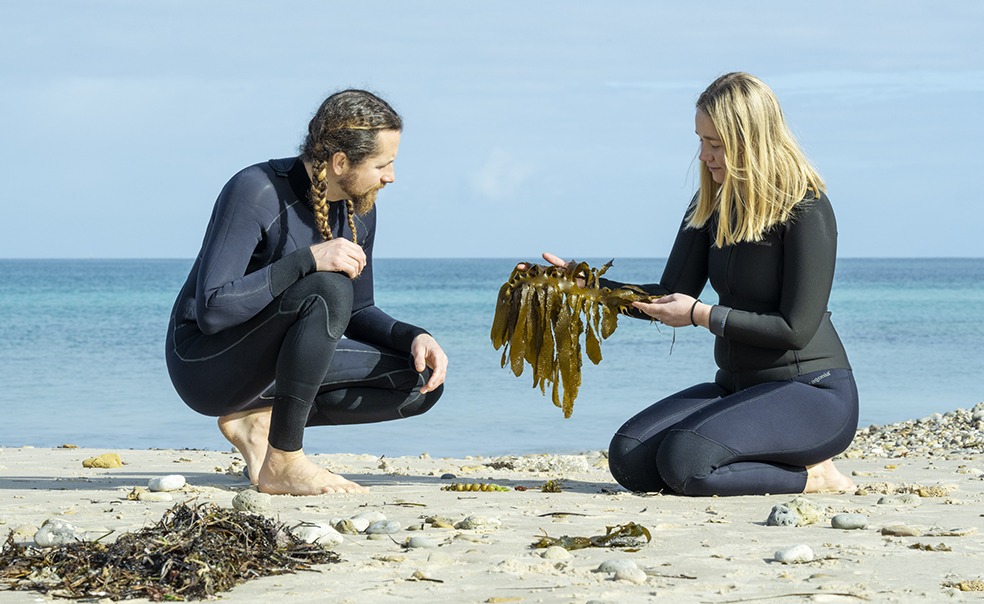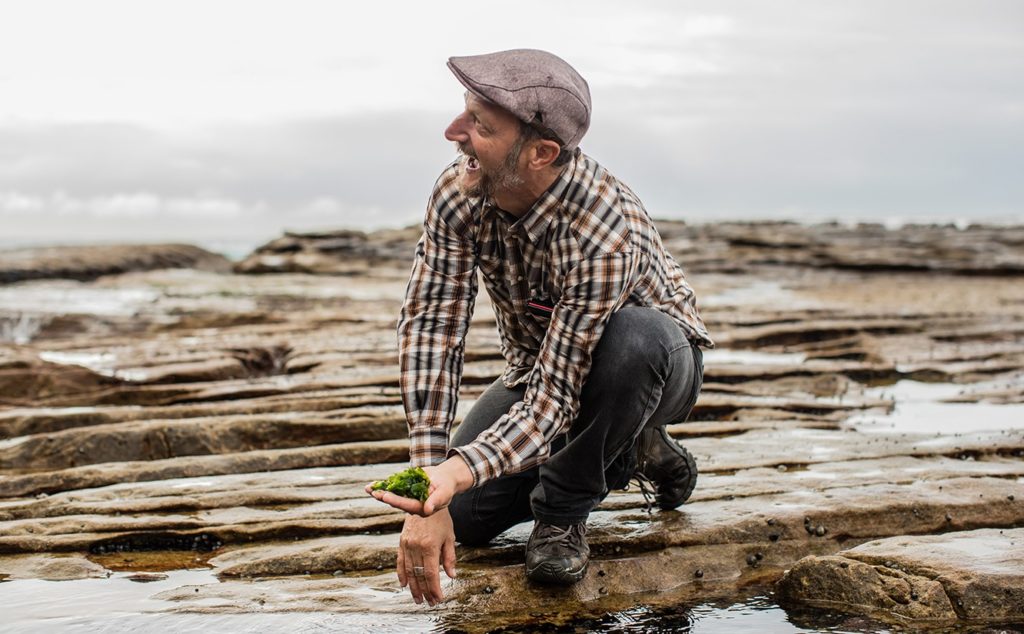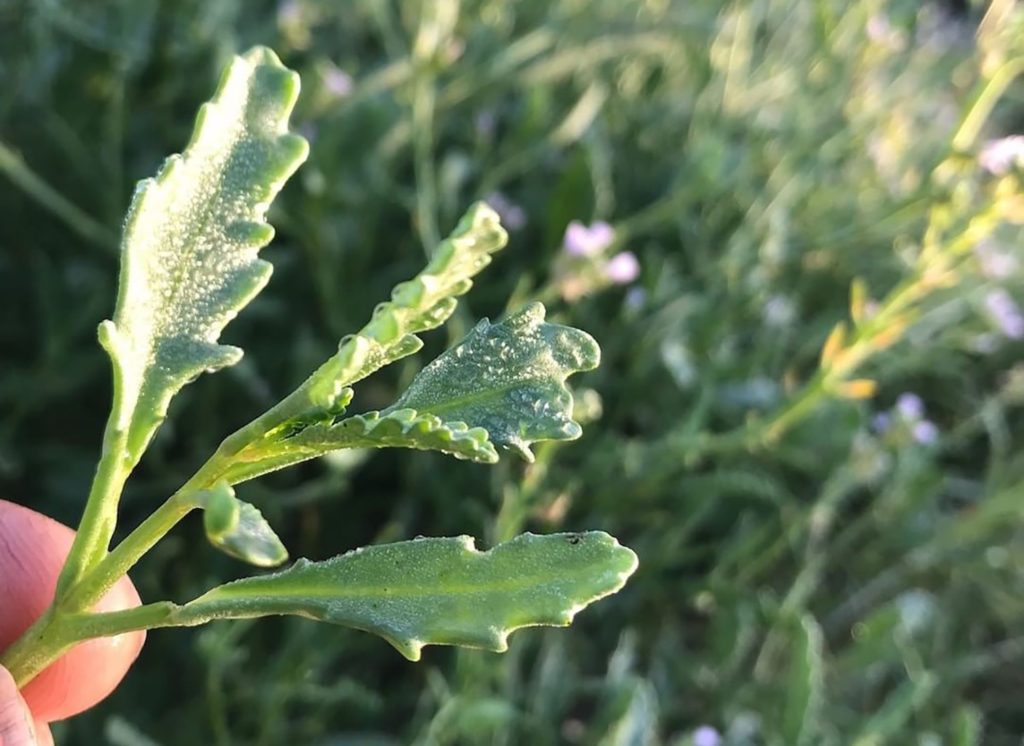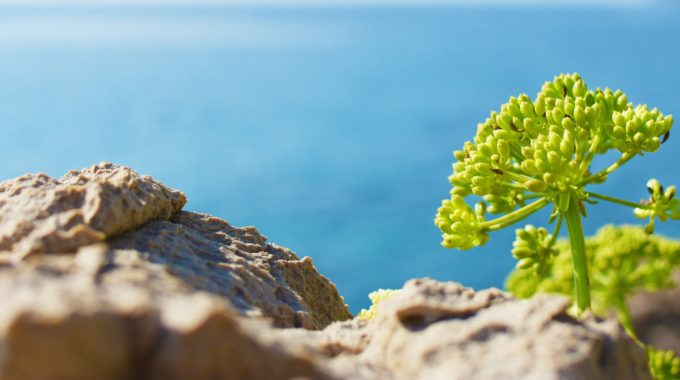Coastal greens offer oceans of benefits
Golden kelp. Neptune’s Beard. Rock samphire. Beach mustard. Our coastal and marine ecologies are brimming with an abundance of edible plants. Coastal greens are now appearing on restaurant menus across Australia. But these tasty delights offer much more than just a surprising burst of flavour. They’re also highly nutritious. And for some species, their cultivation can benefit our marine ecologies, and our planet as a whole.

Kelp is on the way
Seaweeds are critically important to the health of coastal ecosystems. They create habitat and provide food for invertebrates like abalone and sea urchins. Most seaweeds enter the food web as small particles or “seaweed flakes” that feed mussels and oysters. For our own health, seaweeds contain many bioactive chemicals, and may even have anti-cancer properties. Many are also rich in iodine, iron, calcium and antioxidants.
Seaweed aquaculture is a well-established industry worldwide. However, in Australia, it’s still an emerging industry. But it’s a promising one. Sydney start-up Has Algae is pioneering the use of microalgae as a crop that can be used to augment our everyday foods. Venus Shell Systems is growing seaweed biomass in the pristine waters of the Tasman Sea. This can be used to make skincare, food, nutraceutical and pharmaceutical products.

Moonrise Seaweed
In South Australia, Chloe and Brad Darkson recently launched a successful Kickstarter crowdfunding campaign to create Moonrise Seaweed. The couple has been working with the South Australian Aquatic Sciences Centre with the goal to build a First Nations and woman-owned business that aims to regeneratively farm native seaweed species.
“Seaweed farming has the potential to be a win-win-win form of agriculture,” Chloe says. “It produces versatile, nourishing crops, revives coastal economies and regenerates marine ecologies. When done well, seaweed farming can function as a carbon-negative industry. Seaweeds grow prolifically under the right conditions, requiring no fertiliser or fresh water. Its growth draws down carbon and de-acidifies and de-nitrifies the water column.”
Moonrise Seaweed has already developed several seaweed products using wild-foraged golden kelp. These include Fleur de Sel pinch salt and Sea Shells artisanal pasta. However, the aim is to produce these commercially using farmed seaweed. This will take the pressure off wild stocks, leaving storm-cast seaweed to break down and nourish coastal ecosystems. It also leaves plenty of kelp behind for people to collect for their own personal use.

Foraging coastal greens
Renowned foraging expert Diego Bonetto is well-versed in the abundance of edible species that grow naturally in and around our oceans. But he stresses that before you help yourself to any seaweed or other greens you find, you need to know what’s permitted in your own state or territory. There are also ethical considerations to keep in mind.
“You’re allowed to harvest beach-cast kelp for personal use in most states of Australia, but regulations change from state to state,” he says. (You can find more information here.)
“Also, never forage anything in national parks or marine reserves. That’s a big no-no. You should never forage in areas that are under the care of bush regeneration organisations. They are sites of regeneration. It’s not your place to go and disturb the ecology.”

Engage with abundance
That said, Bonetto points out that our coastal ecologies are some of the cleanest places that urban foragers can engage with.
“When you reach the coast, behind you is human settlement; in front of you is wilderness,” he says. “The tide washes the coastline twice a day. It also gets smashed by big storms on a regular basis. Effectively, it gets washed out constantly.”
So what about the ethics of foraging coastal greens? In his coastal foraging workshops, Bonetto teaches that you should only ever engage with abundance.
“The species that I teach, they grow like weeds,” he says. “Things like Marsh Pennywort, which is very common on beaches from Brisbane all the way to Perth. Rock samphire and beach mustard are also quite common. These coastal ecology species are very easy to find, easy to identify and are quite striking in terms of flavour.”
What’s equally striking is the nutritional benefits of these coastal greens. They’re rich in antioxidants, iodine and omega-3s. Beach mustard offers B vitamins, calcium and fibre. Rock samphire is also high in calcium and fibre, as well as potassium and magnesium. It’s also a rich source of vitamin C, and was once used by sailors to prevent scurvy.
Seeing green
If you want to try experimenting with coastal greens in your own cooking but don’t feel confident about foraging, you can now also find them at some retailers. Pocket Herbs in northern NSW sells beach mustard, samphire, seablite and sea purslane. In Victoria, Marine Greens at Snowy River Station also has a large range, including sea parsley, seaberry saltbush, sea lettuce and the fine-as-hair seaweed, Neptune’s Beard.
In Katanning, Western Australia, Moojepin Foods grows saline greens in salt-affected land that’s otherwise unsuitable for traditional farming. It’s hoped that by utilising this land for the production of plants that grow naturally in salty soil, it can help it to repair and regenerate. There are also plans to train other farmers with degraded soils to grow these plants, potentially creating a whole new industry for the region. In 2018, the business won a delicious. produce award gold medal for its red karkalla, also known as baby pigface.
While marine and coastal greens might still be seen as something relatively new and unique in Australia, the possibilities for agriculture, aquaculture and our environment are huge. And the benefits to consumers are equally exciting, both for our taste buds and for our health.









